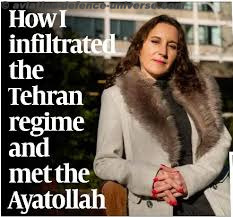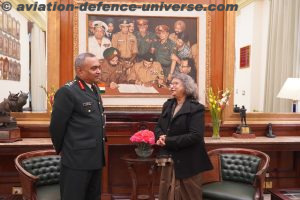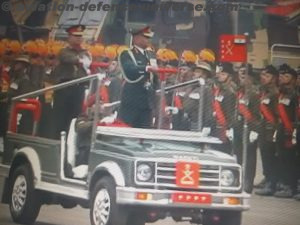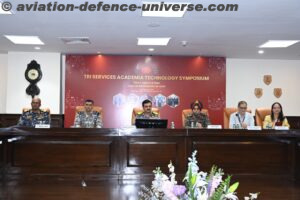By Maj Gen (Dr.) Ashok Kumar, VSM (Retired)
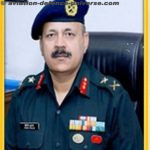 Lucknow. 13 January 2024. Integrated approach to war fighting is a proven concept since the time Army, Navy and Air Forces have emerged in the arsenal of any country. Wherever this integrated approach of warfighting has not been possible, the reasons notwithstanding, the outcomes have also been somewhat compromised. An alternative in the form of the co-ordinated approach of the warfighting is also followed by some of the countries including that by India. It has had mixed responses and all professional deliberations post Indian independence have advocated the need of the integrated approach of the war fighting albeit in the varying degrees. The subject has got the fresh impetus post KARGIL War deliberations but the decision kept on getting postponed due to some reason or the other. CDS was a mandatory appointment to be created for development as well as for the execution of this concept to give wings to the integrated approach of the warfighting.
Lucknow. 13 January 2024. Integrated approach to war fighting is a proven concept since the time Army, Navy and Air Forces have emerged in the arsenal of any country. Wherever this integrated approach of warfighting has not been possible, the reasons notwithstanding, the outcomes have also been somewhat compromised. An alternative in the form of the co-ordinated approach of the warfighting is also followed by some of the countries including that by India. It has had mixed responses and all professional deliberations post Indian independence have advocated the need of the integrated approach of the war fighting albeit in the varying degrees. The subject has got the fresh impetus post KARGIL War deliberations but the decision kept on getting postponed due to some reason or the other. CDS was a mandatory appointment to be created for development as well as for the execution of this concept to give wings to the integrated approach of the warfighting.
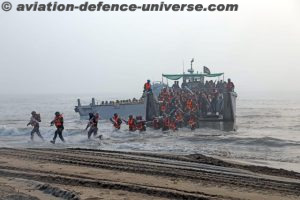 It was on 15 Aug 2019 when the current PM announced that India will have a CDS, the seeds of the integrated war fighting in the form of ‘Theatreisation of the Defence Forces’ were planted. The plan got the real boost when Gen Bipin Rawat was appointed first CDS on 01 Jan 2020 after completing his tenure as the COAS. He had a clear-cut mandate of operationalising the Theatre commands during his tenure of three years.
It was on 15 Aug 2019 when the current PM announced that India will have a CDS, the seeds of the integrated war fighting in the form of ‘Theatreisation of the Defence Forces’ were planted. The plan got the real boost when Gen Bipin Rawat was appointed first CDS on 01 Jan 2020 after completing his tenure as the COAS. He had a clear-cut mandate of operationalising the Theatre commands during his tenure of three years.
While the first CDS started to structure the requisite building blocks, there were many challenges including from the other two services as well as from various Arms/ Services within the Army. A focussed effort started to handle such challenges and it was appearing that the Theatre commands will get raised in a reasonable time frame.
But then there were serious disruptions on the Line of Actual Control (LAC) in the Eastern Ladakh wherein China carried out transgressions at multiple locations in Apr-May 2020 timeframe disregarding all mutual agreements of peace and tranquillity. The transgressions kept getting serious resulting in mobilisation of substantial number of troops from the both sides. GALWAN clash, occupation of KAILASH Range positions by India and non-resolution of the transgressions fully despite political, diplomat & military effort have been the high point of the current ongoing standoff.
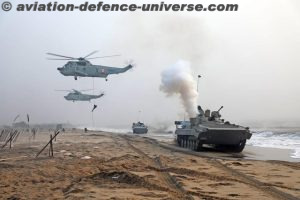 In view of the near conflict like situation prevailing on the LAC with China and China- Pakistan collusively, it was becoming abundantly clear that the Theatre Commands should be fully operational from the word ‘go’ else there can be serious operational adversities. While the sudden demise of the first CDS delayed the process to some extent but this operational consideration is the most important aspect to be addressed before the announcement of the Theatre Commands.
In view of the near conflict like situation prevailing on the LAC with China and China- Pakistan collusively, it was becoming abundantly clear that the Theatre Commands should be fully operational from the word ‘go’ else there can be serious operational adversities. While the sudden demise of the first CDS delayed the process to some extent but this operational consideration is the most important aspect to be addressed before the announcement of the Theatre Commands.
Though the defence forces have Army, Navy and AF as its main constituents but outcome of any national conflict is always related to Army. It is due to this reason that creation of the Theatre Commands needs to be looked into seriously on this coming Army Day.
It is a common practice to ensure that all associated preparatory actions, training, validation and declaration for ‘Fit for War’ are completed as only then a newly raised unit/ establishment can participate in any conflict / war. This is relatively easier for raising a unit / establishment when any other unit / establishment of similar kind has been raised earlier as then it can be largely emulated. The challenges become more intense if a new type of unit / establishment has to be raised and operationalised. The severity becomes alarming if this new establishment is raised under near conflict like conditions, a situation prevailing now on the LAC in the Eastern Ladakh. Raising of the Theatre Commands is one such case.
 The challenges become more intense when the planned organisations, in this case, the Theatre commands, are at the apex level of war fighting in the active operational scenarios. There is thus no point in declaring the creation of Theatre Commands and there after start working on the building blocks to operationalise these Theatre Commands. This method is likely to be disastrous. A better approach could be to streamline the anticipated challenges and processes before the announcement of the Theatre Commands. While some may feel the delayed announcement of the Theatre Commands are due to the reduced focus of the Government on this most important reform of the defence forces but given the focus of the current CDS, it appears that all the building blocks and the processes are being addressed first before these Theatre Commands are announced. Some of the issues which need to be addressed are as under:
The challenges become more intense when the planned organisations, in this case, the Theatre commands, are at the apex level of war fighting in the active operational scenarios. There is thus no point in declaring the creation of Theatre Commands and there after start working on the building blocks to operationalise these Theatre Commands. This method is likely to be disastrous. A better approach could be to streamline the anticipated challenges and processes before the announcement of the Theatre Commands. While some may feel the delayed announcement of the Theatre Commands are due to the reduced focus of the Government on this most important reform of the defence forces but given the focus of the current CDS, it appears that all the building blocks and the processes are being addressed first before these Theatre Commands are announced. Some of the issues which need to be addressed are as under:
- Command and Control. Having accepted the appointment of CDS, Theatre Commands must come directly under CDS. HQ IDS alongwith DMA should be reorganised as part of HQ of the CDS set up. To ensure that there is coherence in the command and control, Theatre Commands should be commanded by the ‘four star’ officers whereas the CDS should be a ‘five star’ officer.
- The current recruiting, training, terms & conditions of service are somewhat at variance between Army, Navy and AF which need to be streamlined. While AGNIPATH scheme has addressed a major issue of somewhat uniformity for the recruitment at the entry level but entire gamut of HR intake, their nurturing and their post-retirement have to be synergised for meaningful Theatre Commands to emerge. The functioning in the silos has to give space to as integrated approach of functioning.
- Each service has created multiple training institutions for all ranks. There is tremendous scope of quality surge and reduction of overheads. This needs to be undertaken with the ‘Lead Service’ concept.
- Operational Disparities. There are multiple disparities amongst the three services in the operational domain, be it communication or other associated issues, these need to be streamlined first before Theatre Commands are announced.
- Formulation of Tri-Services SOPs/ Instructions. It is imperative that individual Service based policies/ instructions / SOPs be replaced with Tri-services documents as only then the Theatre Commands can function efficiently.
- The equipment can be classified in two parts-one as common to each service and the second-specific to each service. Procurement, life cycle maintenance and discard have to be further streamlined. Best practices of individual services have to be proliferated to all the three services.
- It is a very important issue. Some actions have already been taken but more needs to be done. The country has already come out with three new legislations to replace IPC, CrPC and IEA. A similar approach needs to be adopted by the Defence Forces wherein Army Act, AF Act and Navy Acts are to be replaced with a common act which also addresses the current challenges including of those civilians employed under active battlefield conditions.
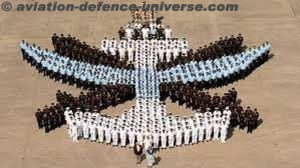 The above are not the only issues to be addressed. In fact, the individual service-based approach of functioning has resulted in disparate functioning in the multiple fields. All these need to be synergised and there could not be a better occasion of doing this than the coming Army Day. At least a firm roadmap must emerge. The task of CDS is professionally very tough as well as new for India and it is hoped that all the related issues are tackled before the Theatre Commands are operationalised. This approach will ensure that these newly created structures will be fully ready from the word ‘go’ to handle the challenges from all our national adversaries.
The above are not the only issues to be addressed. In fact, the individual service-based approach of functioning has resulted in disparate functioning in the multiple fields. All these need to be synergised and there could not be a better occasion of doing this than the coming Army Day. At least a firm roadmap must emerge. The task of CDS is professionally very tough as well as new for India and it is hoped that all the related issues are tackled before the Theatre Commands are operationalised. This approach will ensure that these newly created structures will be fully ready from the word ‘go’ to handle the challenges from all our national adversaries.
(Maj Gen Ashok Kumar, VSM (Retd) is a Kargil war veteran and defence analyst. He is senior fellow of CLAWS and specialises on neighbouring countries with special focus on China. The views in the article are solely the author’s. He can be contacted at editor.adu@gmail.com).














